Digital Marketing
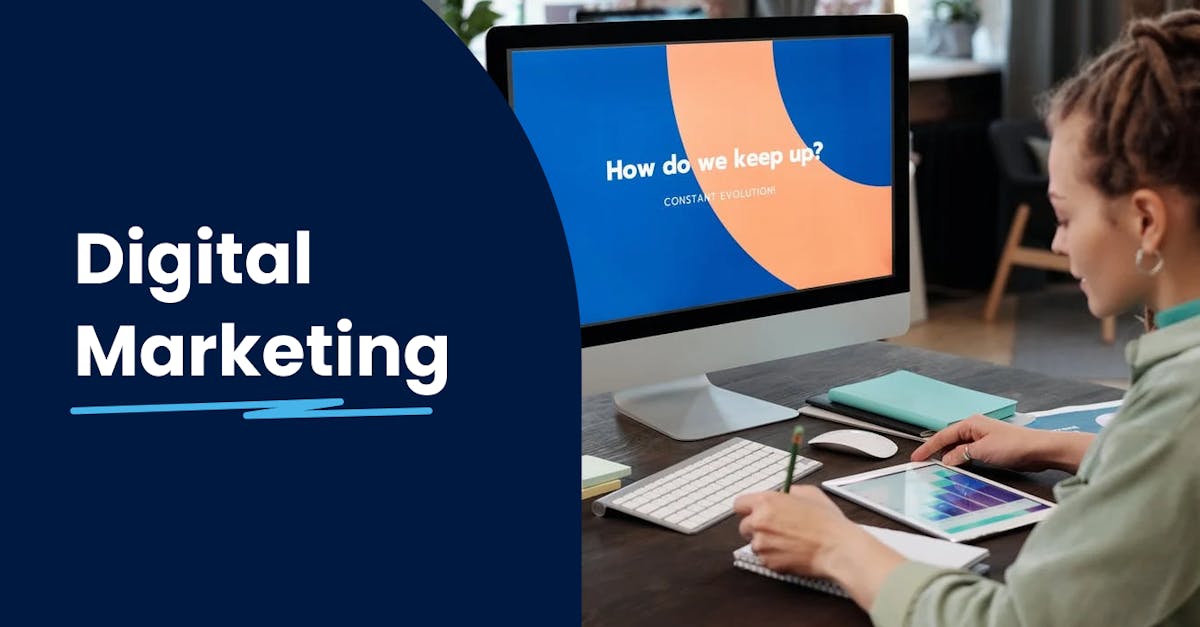
If you’re new to digital marketing and want to understand all the basics in one sitting, we’ve got you covered! Here, we’ll help you understand what it is and how it can benefit your business. We’ll also give you guidelines and digital marketing resources to help hone your knowledge and skills so you can kickstart your first digital marketing campaign.
What is digital marketing?
Digital marketing refers to the type of marketing where you use different digital channels to connect with your potential and existing customers and promote your products or services. Everyone’s spending so much time online now, so your marketing efforts should also go digital. And it’s not just about showing up on social media sites and calling it a day. That’s only one aspect of it. With digital marketing, you have many options where you can reach your customers online: social media sites, video sharing platforms, websites, email, search, and mobile apps. So, they’ll be able to interact with your business across all their devices.
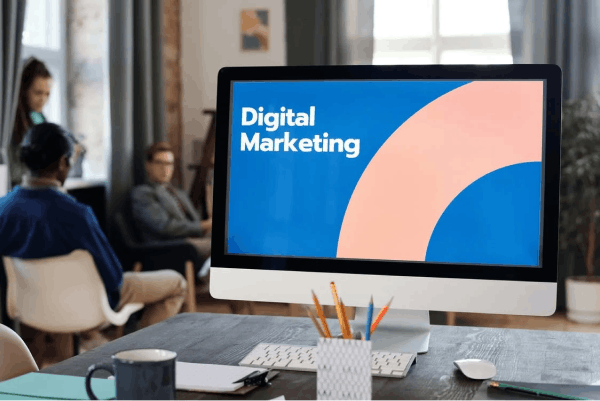
Now, let’s take a look at some of the forms of digital marketing that you can use to establish your brand, connect with your customers, and increase your sales:
- Content marketing
Content marketing is where you publish content for your online business accounts to give information to your customers as well as build trust and connection with them. Your content can be in the form of images, videos, blogs, podcasts—anything you can come up with, as long as it’s within your budget and resources. Typically, it won’t cost you anything to post a single piece of content, unlike paid posts.
The usual way to share information with customers is by posting on your business’s social media accounts. You can learn more about how to build a strong brand image across social media networks by exploring social media training programs. If you’re building a team to handle your business content, then social media employee training courses are also worth sharing with them.
- Social media marketing
Unlike content marketing, where your priority is to give information, social media marketing seeks to create engagement through your posts. It’s not about simply having an active social media account. In order to have a strong online presence, you should be able to encourage your customers to interact with your brand. This can be done through likes, comments, shares, etc. The usual social media networks that you can use for your business are Facebook, Instagram, Twitter, TikTok, and LinkedIn.

Gain more in-depth knowledge of how to grow your business’s social media presence and keep your audience engaged by taking social media marketing training courses.
- Search Engine Marketing (SEM)
Through search engine marketing (SEM), you can appear and rank on the search engine results page (SERP) when customers are searching on search engines like Google, Bing, and Yahoo through paid ads. For example, when your customer is searching for the keyword “best skincare products” on Google, your website that promotes skincare products will appear as a paid search ad. Since that’s the first thing they’ll see on the results page, there’s a higher chance that they’ll click on the link and go to your website. Although, you’ll need to pay for every click you get here.

- Search Engine Optimization (SEO)
Search engine optimization (SEO) works in a similar way as SEM, where your goal is to rank on the search engine results page through the power of keywords. But here, you have less control over where you can show up. Unlike SEM, where you can choose specific keywords or phrases you can “bid” for, SEO relies on the algorithm of the search engines. To rank organically, you need to have quality content that follows SEO best practices, website technical set-up improvements, high website authority, and more. It’s also not exactly a marketing form itself since it’s more of an organic way of driving traffic to your site.
- Email marketing
Email marketing allows you to connect directly to the email inbox of your customers with promotional or transactional messages. When done right, it can help you generate leads or convince your customers to make a purchase. But, it’s easy to get lost in the mail if customers don’t see value in your content. So, it’s important to make sure that your emails are personalized, relevant, and engaging enough to drive desired actions. In order to improve email deliverability, it is also necessary to perform email verification to remove invalid email addresses. For keeping messaging safe from threats you should use email security protocols such as DKIM, DMARC ,SMTPS and etc.
You need to be really strategic with your email marketing. But, worry not. You can develop your knowledge and skills through email marketing courses. Most of these courses will give you strategies and techniques for developing, creating, and improving your email campaigns.
- Affiliate marketing
In affiliate marketing, a network of people (what we call affiliates) will help you promote your products or services. Using a revenue-sharing model, they earn a commission for every sale they make. For example, a YouTube finance vlogger talks about how great your credit card products are, and then they’ll encourage their viewers to sign up as well through their affiliate link. Usually, these affiliates already have an existing audience that trusts them. This allows you to get a wider reach of an audience that is likely to convert.
- Mobile marketing
Mobile marketing allows you to reach your customers through text messages, MMS, and in-app marketing. This way, you can easily update your customers about certain promos or any other relevant information on their mobile devices. Using multiple tools, including WhatsApp for marketing, you can easily stay connected with your audience. But since you have less flexibility in this type of marketing, you have to be clear and concise with your messages. It’s also best if you only use it as support for your other digital marketing campaigns.
Sign up for free and take digital marketing courses at EdApp for no cost forever—no ads or hidden fees here!
Why is digital marketing important?
Today’s customers are more active online—they hang out on social media sites, search online for information about products or services, watch videos for entertainment, read news and blogs to stay updated, and the list goes on. This is where the importance of having a strong online presence through digital marketing comes in.

When your business is accessible online, it’s easier to build connections with your customers. So, when they are scrolling through Facebook or Instagram, you’ll be able to engage potential customers as well as existing ones with your brand, whether through paid or organic posts. Or, when they’re searching on Google for products or services, you’ll be able to appear on the results page and show them relevant information or your offerings from your site. In short, digital marketing allows your business to stay relevant to your customers and stay competitive in the market.
The technologies behind digital marketing platforms are also constantly evolving to make the marketing process more convenient for digital marketers. Business dashboards are provided for easier management of digital marketing campaigns. Algorithms are always being updated. AI machine learning is also being used. Essentially, there are so many technological advancements being made in digital marketing to accommodate various business needs. So, it’s best to use them to your advantage.
Also remember, exploring digital marketing doesn’t mean you have to completely abandon your traditional marketing strategies. You can either combine offline marketing and digital marketing, or you can space them out strategically. Don’t worry, we’ll dive deeper into the tips for setting up your digital marketing campaigns in the latter part of this article.
Check out this list of free digital marketing courses where you can gain a deeper understanding of the different forms of digital marketing as well as develop skills for creating digital marketing campaigns.
Benefits of digital marketing
Now that we know the importance of digital marketing, let’s explore how it can specifically benefit you and your business:
- Access to a broad and targeted audience – Unlike billboards, where literally anyone can pass by your ad, digital marketing gives you full control over who sees your ad and what they see. If you’re only targeting a specific demographic or even a lifestyle, you can customize the audience accordingly. This way, you can resonate better with the people seeing your online ads and increase engagement.

- Automated tracking of customer behavior – Digital marketing platforms use technology to automatically monitor the behavior of your customers towards your ads. Through digital marketing, you’ll be able to see whether or not they’re engaging with your post, watching your entire video ad, purchasing your product or service, and so on. This gives you actionable insights so you can improve your campaigns accordingly. For example, you can retarget an audience who previously engaged with your ads and promote new products.
- Measurable results – Similar to the concept of automated tracking, digital marketing allows you to better measure the results of digital marketing initiatives. We call these quantifiable metrics key performance indicators or KPIs. This gives you a real insight into how successful your campaign is. You can also determine beforehand which KPIs will be the most relevant for your objectives. Here are some of the basic digital marketing KPIs you’ll encounter:
- Reach – Total number of individuals who saw your ad.
- Impressions – Total number of times your ad is shown. For example, if a customer sees your ad twice, then your ad got 2 impressions, even if only one person saw it.
- Engagement rate – This metric varies depending on the platform. But essentially, it shows the level of engagement your audience has with your ad through likes, comments, etc.
- Click-through rate – The rate at how often your audience sees your ad and actually clicks on it. It's not just about how often your audience sees your ad, but also how frequently they engage with it. To truly utilize the power of this metric, aim for optimizing CTR for better results.
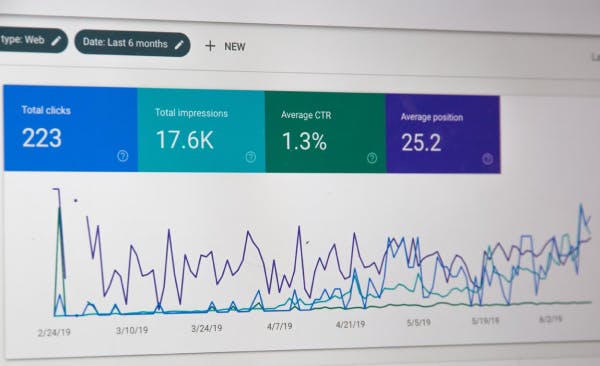
- Cost efficiency – Traditional marketing strategies like TV advertisements, billboards, and so on, cost so much. . They’re not bad, just expensive, especially for businesses that are still fairly new. But with digital marketing, you can create awareness, engage customers, or even get conversions at a lower cost–all while getting the desired measurable results within a budget. Quick tip: You can also apply for a digital marketing grant to offset the costs of setting up the digital marketing infrastructure of your company
Digital marketing guidelines
As a beginner, you might encounter some digital marketing issues if you lack the knowledge on how to properly execute your digital marketing campaigns. So, we prepared general guidelines for you, whether you’re creating your first digital marketing campaign or simply want to improve your current process.

1. Understand your target audience
Let’s be real – all your digital marketing efforts are pointless if they’re not resonating with your audience. And the best way to avoid that is to know your market inside-out. Who are your customers? What are their demographics? What are their motivations? What are their needs and wants? What are their pain points? What’s their lifestyle? What is their online behavior? There are so many aspects that you need to consider to understand how your business can bring value to your customers.
First, gather data about the ideal users online that your business can target. Then, create a customer persona to get a better picture of your customers. A customer persona is a fictional archetype that embodies the demographic profile, traits, behavior, and lifestyle of your customer. Since it’s backed by research and data, you won’t have to assume what solutions you can give them or how you can reach them online.
2. Do competitor research in the digital landscape
This is really important, especially if you’re fairly new to digital marketing while your competitors already have a strong online presence. Doing competitor research gives you better insight into how you can penetrate the digital landscape and outdo your competitors. Learn from their strategies that are working well and those that don’t. That is not to say that you should copy everything they’re doing. Instead, use your insight to figure out how you can perform better or how you can stand out from the rest. Knowing what your competitors are doing online also gives you a better idea of how your customers are engaging with them online.
It might be a good idea to also look at their pricing strategy and consider how you can top it and offer your target market with a better deal.
Bonus tip: Integrate “repricing” in your pricing strategy. “Repricing” or dynamic pricing for e-commerce is the process of offering products at various prices that adjust according to market conditions.
3. Make your goal specific and identify the right key performance indicators (KPI) for your objective
Having a specific goal is what binds your digital marketing strategies together. Putting emphasis here on the word “specific,” it’s ideal to be specific with your goals. It’s also crucial to understand which marketing KPIs are your priority.
Let’s say that your goal is to create awareness on Facebook for your brand with a product launch post. You can’t look at the engagement rate and then assume that your marketing isn’t working if it turns out to be low. Instead, your KPI should be the reach metric (the number of individuals who saw your ad). Since you’re a new brand, you can’t expect that engagement will already be high since users are still unfamiliar with it. Most digital marketing platforms will let you choose the KPI metric, so the technology can improve the performance of the ad based on that.
Putting this into practice, let’s look at the two goals below and see how having a specific goal makes much of a difference.
- Vague goal: Generate leads for Brand X’s new credit card product.
- Specific goal: Retarget 3,000 debit card holders and generate 60% sign-up leads for Brand X’s new credit card product.
It’s hard to measure the level of success of your digital marketing campaign with a vague goal, compared to having a specific goal. This is primarily because you know exactly who you’re targeting and you have a clear number of specific target KPIs.
4. Choose the right digital marketing channels
Once you already know your target market and your goals, then you can now decide on which digital marketing channels you’ll use for your campaign. Look back at your customer research or your customer persona, then see which platforms they are using. If your target audience consists of professionals who have signed up for your software service, you can use email marketing to reach them. Especially if they’re IT industry enthusiasts, you can locate them through a LinkedIn email finder since it’s more possible that they’re active members of the LinkedIn community.
Or if your target audience is Gen Z, then it’s ideal to reach out to them through social media sites. It really all boils down to how well you know your potential and existing customers.
Digital marketing in the workplace
At this point, you already know what digital marketing is, why it’s important for your business, and how to execute it. So now, we want to ensure that your marketing team is also on board with going digital.
Below are some tips on how to ensure that your team has the knowledge and skills to penetrate the digital landscape and kick off your digital marketing campaigns:
- Start with the marketing basics
Before anything else, your team’s fundamental knowledge of marketing should be refreshed, so they’ll have a better appreciation of the digital aspect of marketing later on. You can do this by sharing with them some free marketing training courses, which can help reinforce the basics of knowing the market, setting business goals, creating marketing strategies, and many more. If you’re forming a new team, then it’s worthwhile to check out this list of marketing courses for beginners.
There are also free marketing training presentations for PowerPoint that you can consider if you want a more traditional way of learning the basics of marketing. But, even though PPTs can be helpful as learning materials, they can be a bit boring. The good thing is that EdApp gives you a PowerPoint conversion tool, so you can instantly transform old-school lessons into interactive, mobile-friendly lessons—just like magic! These courses will also be divided into a couple of short-form lessons so information is easier to understand and quicker for the whole team to finish.
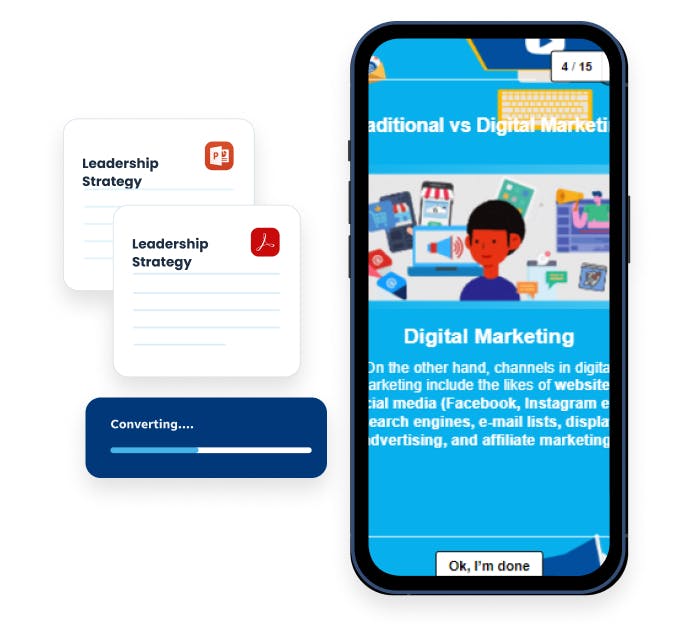
- Introduce digital marketing through training
Once the fundamentals and the basics are all set, the priority now is to make sure that your team is ready to go beyond the traditional marketing methods. And the best way to do that is through training. Through digital marketing training, your team will become more familiar with the different online channels you can use to establish your presence and sell your products or services. It will also help your team have practical knowledge of how to navigate through these platforms and execute digital marketing campaigns.
At this age, information is at your fingertips. Take EdApp, for example. It provides a course library where you can find many marketing training programs or internet marketing training courses that you can share with your team. What’s great about these courses is that they use proven learning solutions to make training effective, engaging, and convenient. Here, lessons are bite-sized, include interactive elements in each slide, and are accessible on mobile devices—exactly everything your team needs.
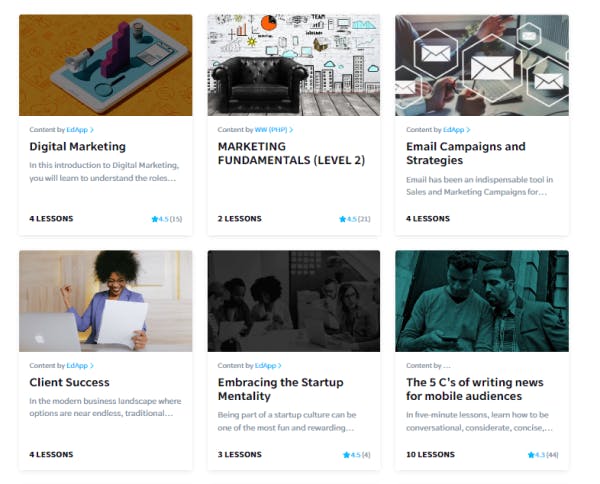
Sign up for free and take digital marketing courses at EdApp for no cost forever—no ads or hidden fees here!
Author
Shera Bariuad
Shera is a workplace learning expert with a background in planning performance-driven solutions for various business industries. She’s dedicated to driving better learning and development outcomes by providing training strategies for training managers and curating lists of tools and courses for learners. Outside of work, she spends her time reading, illustrating, and designing.
